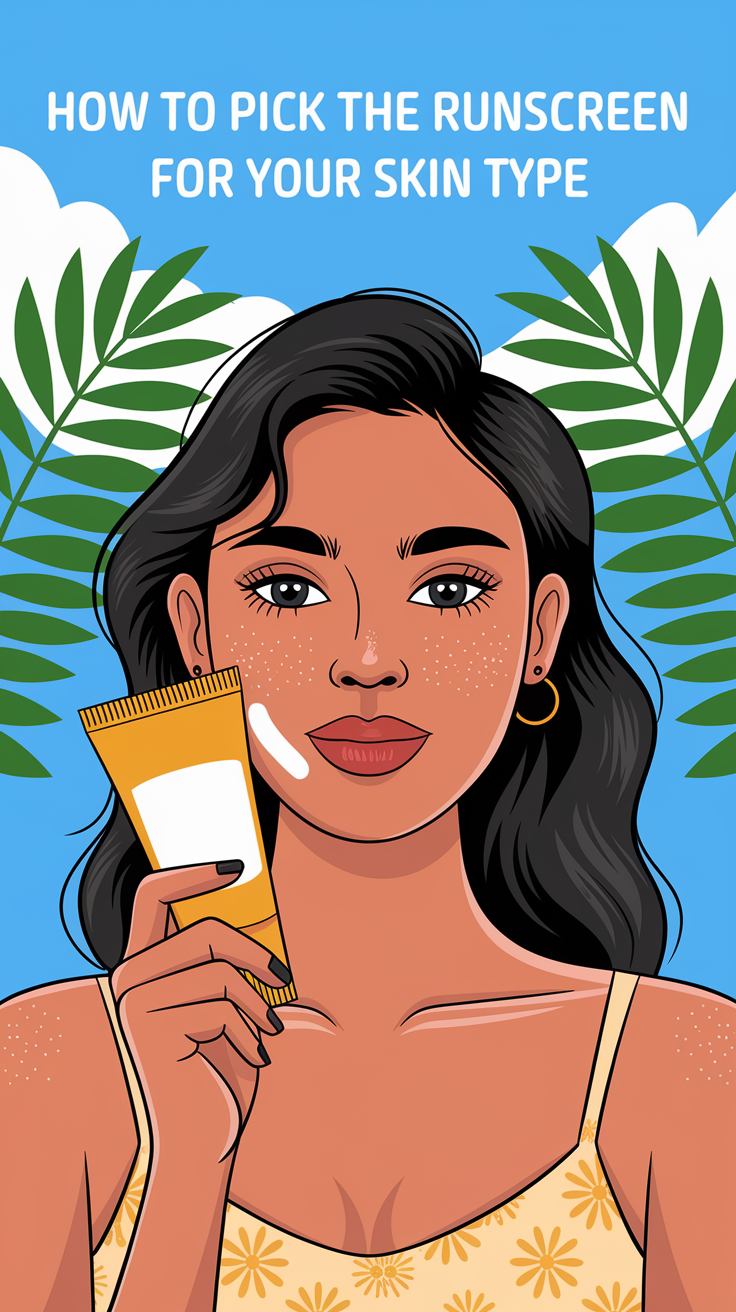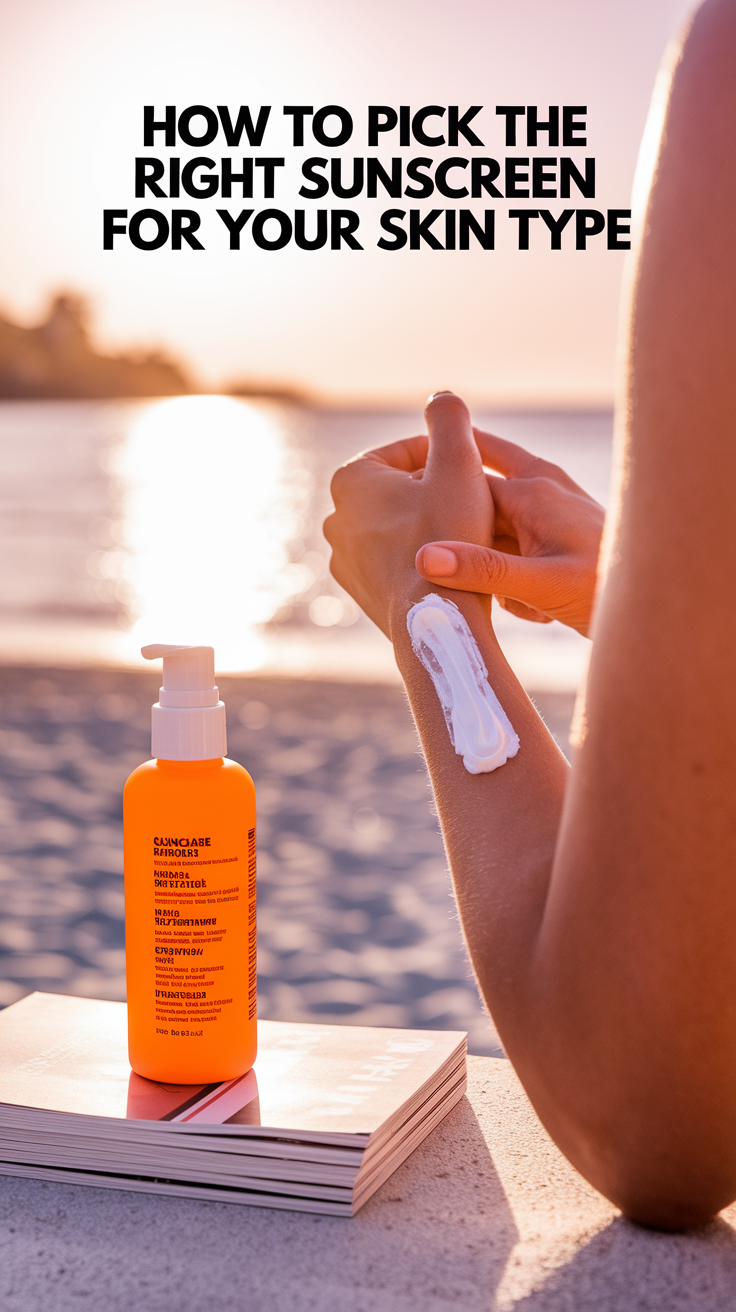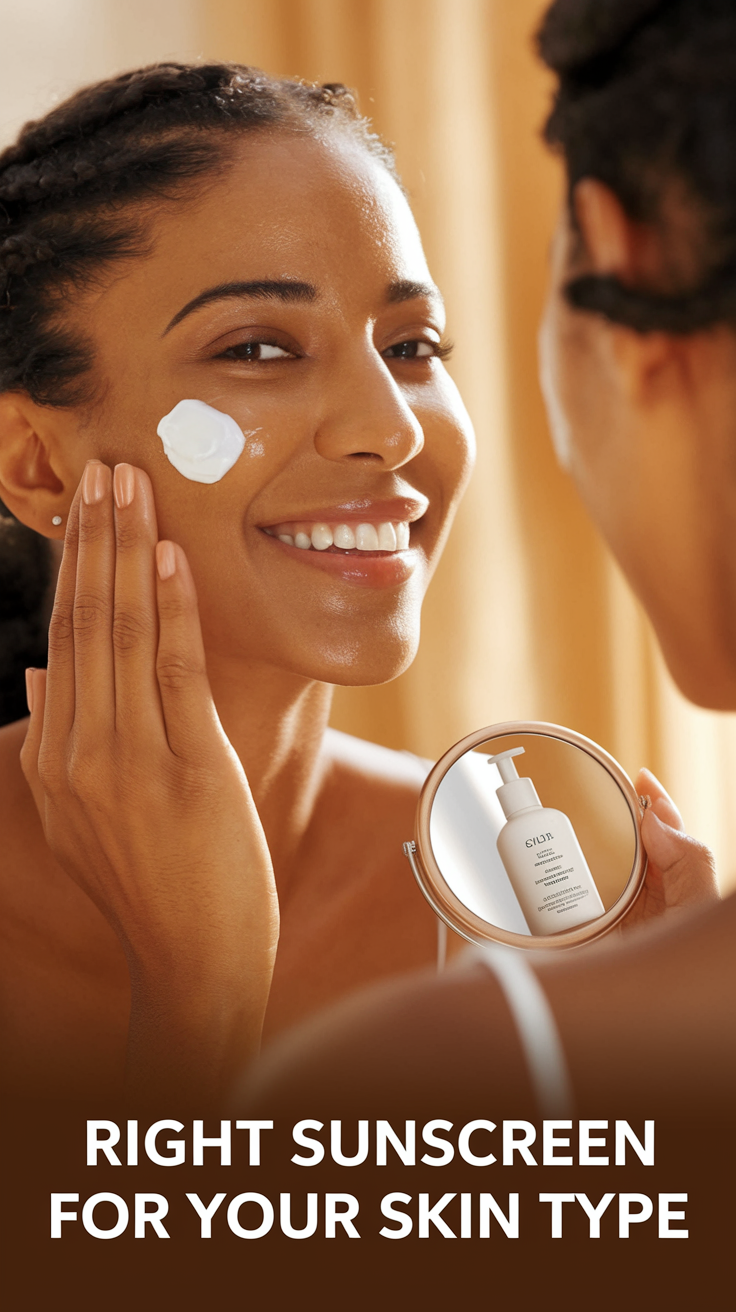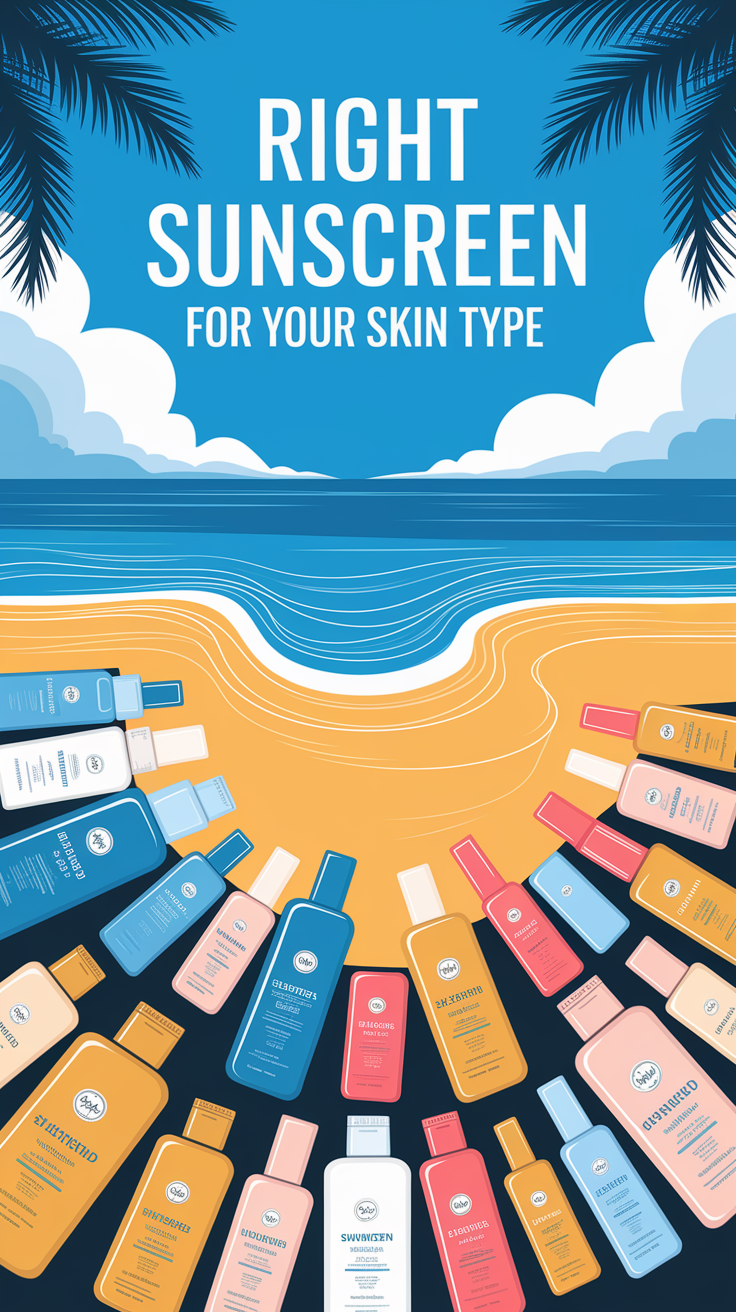
Research indicates that sun-related exposure causes 90% of all skin aging signs, which appear on the skin surface despite the aging time itself. Most people use sunscreen, although these products do not meet their skin requirements. Finding suitable sunscreen has become both simpler and more perplexing because the market is abundant with various filters and hybridized products.
The selection process for a suitable product depends on how well it matches your skin requirements. In this complete guide, you will learn everything needed to select optimal sunscreen for your skin type, along with understanding mineral and chemical filters and reading SPF labels. You will also discover the leading sunscreen products of this year. Users can benefit from our included comparison chart together with our SPF checklist to support their selection process.
Who is this guide for?
Sunscreen-related breakouts, white residue, and skin irritation are the reasons you should read this article. This reading is essential for anyone who wants to prevent skin damage, seeks clean ingredients or wishes to become more proficient at shopping smarter by 2025.
Why Choosing the Right Sunscreen Matters More Than Ever in 2025
Sunscreen has transitioned from a seasonal item to a necessary daily product because both climate change and stronger UV intensity make it essential for protection. The selection process of sunscreen exceeds basic SPF value consideration.
The sunscreen products available today seek to protect skin from both UVB burning and UVA aging and long-term damage effects. You can end up selecting an inappropriate sunscreen formulation because there are numerous cosmetics-grade products, such as BB creams and tinted moisturizers, available as SPFs in stick form.
So what’s at stake? When you use an incorrect sunscreen formula, your skin reacts negatively, leading to blocked pores, irritated skin, or both, and potentially damaging the results of your skincare routine. Taking the right selection leads to protection against wrinkles and sunspots along with safeguarding against skin cancer.

Chemical vs. Mineral Sunscreens: What’s the Difference?
Chemical Sunscreens: Lightweight but Potentially Irritating
The filters absorb UV rays through heat-producing conversion processes. The sunscreen formulation stays understated on the surface of the skin while providing a sense of weightlessness, which suits makeup users well. The active ingredients oxybenzone and avobenzone produce negative effects that lead to skin allergies and sensitivity, particularly among those with sensitive skin or acne conditions.
Mineral Sunscreens: Gentle but Thicker
Physical sunscreens operate under the name of physical blockers, which use zinc oxide and titanium dioxide for reliable UV ray reflection. The products provide suitable protection for sensitive skin yet they create a white hue that typically affects darker skin tones, although manufacturers have improved this issue during the year 2025.
What’s New in 2025?
The sun protection market continues to expand toward formulas that combine both chemical and mineral blocking agents. The latest sun protection formulas achieve the dual goal of extensive spectrum defense while maintaining attractiveness —formula that replace previous trade-offs between effectiveness and comfort.
Filter Comparison Table:
| Type | Filters Used | Best For | Pros | Cons |
|---|---|---|---|---|
| Chemical | Avobenzone, Octocrylene, etc. | Oily/normal skin | Invisible finish, lightweight | May irritate sensitive skin |
| Mineral | Zinc oxide, Titanium dioxide | Sensitive, dry, reactive skin | Calming, reef-safe, baby-safe | White cast, thicker texture |
| Hybrid | Blend of both | Most skin types | Balanced feel + full protection | Usually more expensive |
💬 What kind of sunscreen filter are you using right now? Have you checked its label lately?

How to Choose Sunscreen by Skin Type
For Oily or Acne-Prone Skin
You should select water-based, non-comedogenic products with a matte finish and no oil content in them. The most suitable formulas are either gels or fluids. Avoid using heavy creams with silicones and fragrant ingredients.
💡 Ingredients to look for:
- Niacinamide (anti-inflammatory)
- Zinc oxide (mineral filter, calming)
- Silica (helps absorb oil)
For Dry or Sensitive Skin
Choose creamy SPF products with hydrating elements which contain hyaluronic acid and ceramides together with squalane. Customers who have sensitive skin often prefer sunscreens made from minerals because these products provide gentleness and soothing effects on the skin.
💡 Tips:
- Avoid alcohol-based sprays or gels
- Opt for fragrance-free labels
- Check the packaging for products that contain any terms related to soothing or barrier repair.
For Combination Skin
This skin type needs balance. People with this skin type should select thin sunscreen lotions or hybrid products that combine hydration with a non-oily consistency. People with this skin type should use different sunscreen products for their T-zone and cheek regions.
For Darker Skin Tones
Purchase modern invisible sunscreens or tinted mineral products that do not create a visible white cast. Brands achieve tone-adaptive protection with nano zinc oxide and iron oxides while eliminating ashiness in the formulas.
You can check your skin match using our SPF Selector Quiz that produces instant recommendations matching your needs.

Understanding SPF Labels and What They Really Mean
People often find themselves standing before sunscreen tubes, trying to understand the meaning behind SPF 50 PA++ Broad Spectrum. Let’s break it down.
- There are three major categories on sunscreen labels which describe their capabilities against both UVA and UVB rays: SPF Sun Protection Factor (blocks UVB rays) along with the PA levels.
- SPF 30 blocks ~97% UVB
- SPF 50 blocks ~98%
The UV protection rate of SPF 100 amounts to blocking over 99% of ultraviolet rays though it requires the same frequency of reapplication as other SPF levels.
- The PA Rating system provides UVA protection standards mainly to Asian brand products.
- Measures UVA protection
- PA+ = some protection; PA++++ = extremely high protection
- Broad Spectrum:
- Sunscreen with this feature blocks both UVA and UVB rays.
- Every day you should select this type of sunscreen
- Water-Resistant:
- This product stays effective in water for 40 to 80 minutes, although it maintains no waterproof capabilities.
- Reapplication is still necessary
Top 5 Sunscreens for Every Skin Type in 2025
| Product Name | SPF/PA | Filter Type | Best For | Finish |
|---|---|---|---|---|
| EltaMD UV Clear | SPF 46 | Mineral + Chemical | Acne-prone, sensitive | Lightweight, matte |
| Supergoop! Glow Screen | SPF 40 | Chemical | Normal, dull skin | Radiant, dewy |
| La Roche-Posay Anthelios | SPF 60 | Mineral | Sensitive, mature skin | Velvet-soft |
| Black Girl Sunscreen | SPF 30 | Chemical | Melanin-rich skin | Invisible, hydrating |
| Dr. Jart+ Every Sun Day | SPF 50+/PA+++ | Mineral | Dry, combo skin | Natural satin |
The tested products successfully completed consumer and clinical studies that achieved positive results on performance together with skin compatibility ratings.
Common Mistakes When Using Sunscreen
The correct use of sunscreen becomes essential because the wrong technique can make the best sunscreen ineffective. Some common errors regarding the correct use of sunscreen persist throughout 2025 in these following ways:
- A proper application requires a full teaspoon measurement for both face and neck areas.
- The practice of skipping reapplication is crucial, especially in cases where more than two hours pass since application or during moments of sweating.
- Medical experts often neglect to apply sunscreen to the ears, lips, and eyelids, leaving them vulnerable to harmful UV rays.
- People mistake sunscreen from SPF makeup as adequate protection, although it is insufficient on its own.
- Expired sunscreen fails to function as SPF loses its effectiveness in less than 12 months of expiration.

The correct use of sunscreen becomes essential because the wrong technique can make the best sunscreen ineffective. Some common errors regarding the correct use of sunscreen persist throughout 2025 in the following ways:
- A proper application requires a full teaspoon measurement for both face and neck areas.
- The practice of skipping reapplication is crucial, especially in cases where more than two hours pass since application or during moments of sweating.
- Medical experts often neglect to apply sunscreen to the ears, lips, and eyelids, leaving them vulnerable to harmful UV rays.
- People mistake sunscreen from SPF makeup as adequate protection, although it is insufficient on its own.
- Expired sunscreen fails to function as SPF loses its effectiveness in less than 12 months of expiration.
Sunscreen Trends to Watch in 2025
The sunscreen market has experienced many fresh developments that would astonish those who have avoided recent sunblock purchases. Several groundbreaking innovations are redesigning the entire skincare section.
- The market now offers SPF-based cosmetics through products such as BB creams together with tinted serums as well as foundation drops.
- Environmentally friendly sunscreen and vegan-derived products have gained popularity because major brands now exclude oxybenzone from their formulas.
- Sunscreen sticks present a clean application method, which makes them outstanding for travel and allows effortless reapplication.
- SPF with skin-correcting actives—niacinamide, peptides, antioxidants
- Smart SPFs serve as innovative products that modify protection levels through UV index sensors and blue light detection.
Does a sunblock that automatically adjusts its protective strength level according to the ultraviolet ray intensity attract you? Please let us know in the comments!
Final Thoughts: Your Skin Deserves the Right Protection
The correct sunscreen selection for 2025 serves both sunburn prevention purposes and lasts as a dedication to your skin health alongside aesthetic outcomes. The contemporary sunscreen market provides personalized solutions for every type of skin and improved product quality.
To recap:
- Match the formula to your skin concern.
- Become familiar with the meaning of SPF and PA ratings
- You should always apply sunscreen, regardless of whether it states SPF 50 or higher.
- Hybrid and tinted sunscreen products are here to provide improved comfort along with better appearance.
Please share with us your current sunscreen preference together with its reasons. Forum availability exists for your thoughts and questions at the comment section. Together we should enhance our beautiful appearance instead of hastening our skin damage.
The guide you need to choose your ideal sunscreen is ready to share on Facebook or X if it proves helpful to you.

